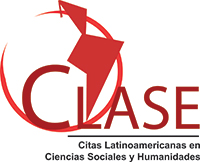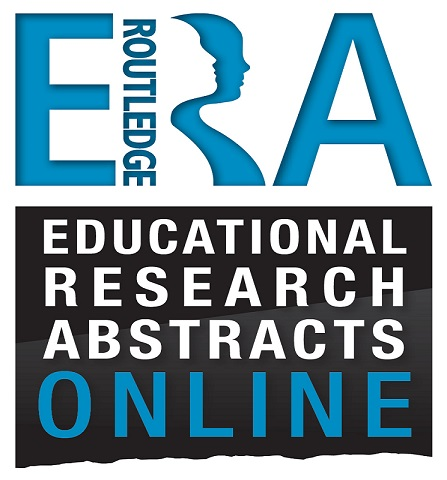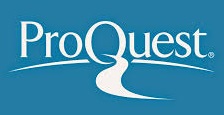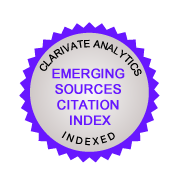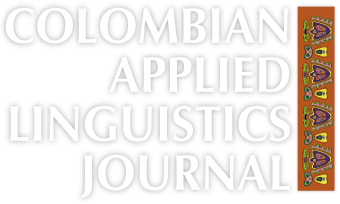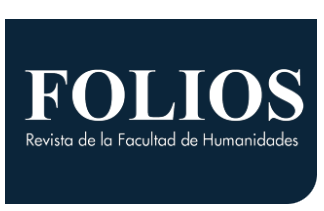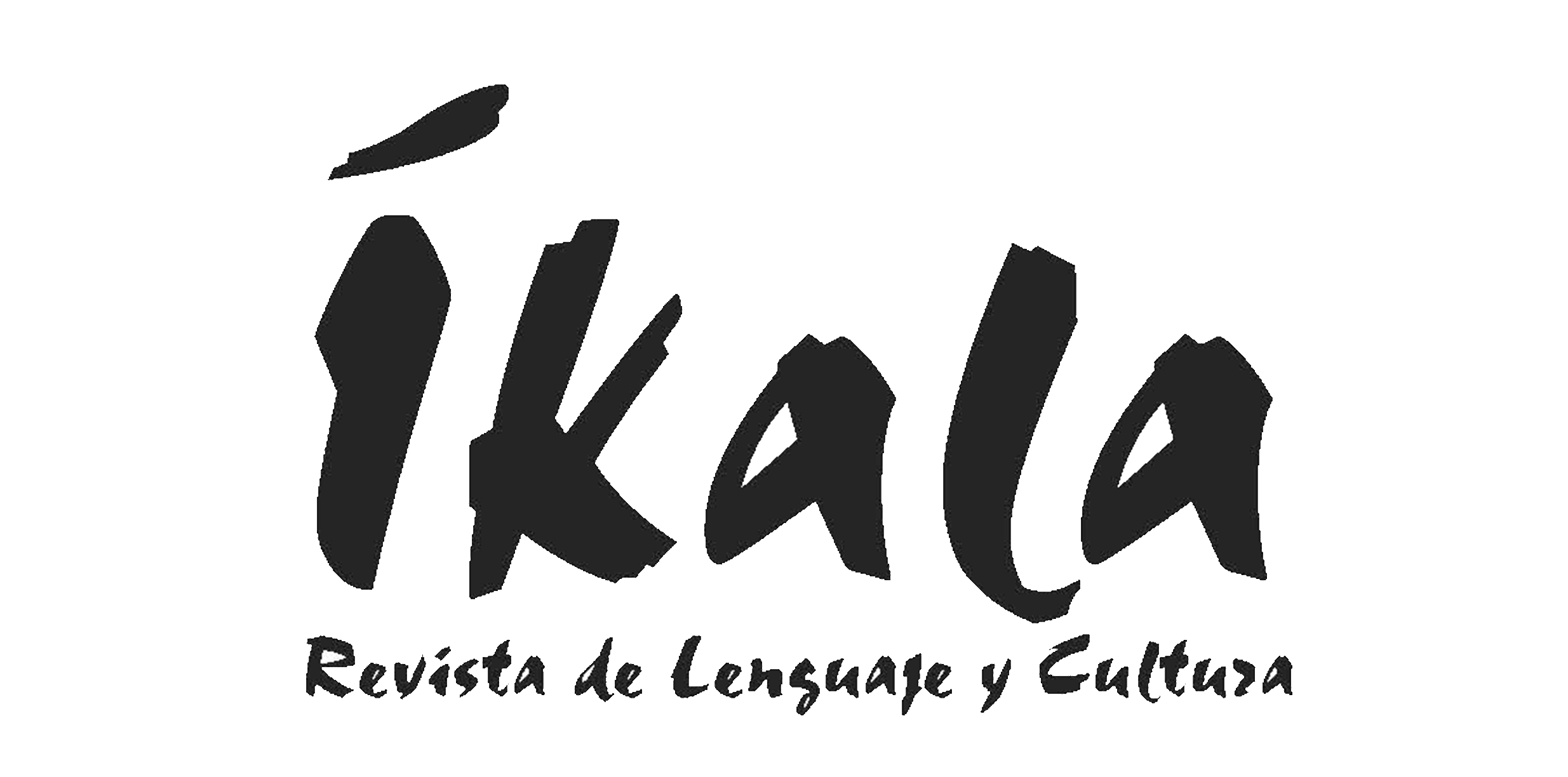Adolescents’ Awareness of Environmental Care: Experiences when Writing Short Descriptive Texts in English
Concientización de los adolescentes sobre el cuidado ambiental: experiencias al escribir textos descriptivos cortos en inglés
Keywords:
Descriptive texts, environmental topics, guidance questions, interdisciplinary work, writing process (en)Preguntas orientadoras, procesos de escritura, temas ambientales, textos descriptivos, trabajo interdisciplinario (es)
Today it is necessary to approach environmental topics with students in an interdisciplinary manner to mitigate the environmental damages that the Earth is suffering. In this paper we report an action-research and innovation study aimed at sensitizing students with respect to the care and preservation of the environment through the writing of short descriptive texts in English. The study had four stages: motivation, knowledge of ecological vocabulary, production of sentences and paragraphs, construction of short descriptive texts with the help of guidance questions and their publication in the school newspaper. The findings show that the procedure used in class promotes interdisciplinary work around environmental topics as well as the development of writing skills.
Hoy en día, es necesario abordar temas ambientales con los estudiantes, de manera interdisciplinaria, para mitigar los daños ambientales que está sufriendo la tierra. En este artículo reportamos un estudio de investigación-acción e innovación que buscó sensibilizar a los estudiantes acerca del cuidado y la preservación del medio ambiente mediante la escritura de breves textos descriptivos en inglés. El estudio tuvo cinco etapas: motivación; conocimiento de vocabulario ecológico; producción de frases y párrafos; construcción de breves textos descriptivos -con la ayuda de preguntas orientadoras-, y la publicación de los textos en el periódico escolar. Los resultados muestran que el proceso empleado en clase promueve el trabajo interdisciplinario en torno a temas ecológicos, así como el desarrollo de habilidades escriturales.
Adolescents' Awareness of Environmental Care: Experiences when Writing Short Descriptive Texts in English*
Concientización de los adolescentes sobre el cuidado ambiental: experiencias al escribir textos descriptivos cortos en inglés
Lorena Jaramillo Urrutia**
Ana Stella Medina Gutiérrez***
Colegio Distrital Aquileo Parra, Colombia
**lonajarruti@hotmail.com
***chinchin@etb.net.co
This article was received on July 29, 2010, and accepted on January 30, 2011.
Today it is necessary to approach environmental topics with students in an interdisciplinary manner to mitigate the environmental damages that the Earth is suffering. In this paper we report an action-research and innovation study aimed at sensitizing students with respect to the care and preservation of the environment through the writing of short descriptive texts in English. The study had four stages: motivation, knowledge of ecological vocabulary, production of sentences and paragraphs, construction of short descriptive texts with the help of guidance questions and their publication in the school newspaper. The findings show that the procedure used in class promotes interdisciplinary work around environmental topics as well as the development of writing skills.
Key words: Descriptive texts, environmental topics, guidance questions, interdisciplinary work, writing process.
Hoy en día, es necesario abordar temas ambientales con los estudiantes, de manera interdisciplinaria, para mitigar los daños ambientales que está sufriendo la tierra. En este artículo reportamos un estudio de investigación-acción e innovación que buscó sensibilizar a los estudiantes acerca del cuidado y la preservación del medio ambiente mediante la escritura de breves textos descriptivos en inglés. El estudio tuvo cinco etapas: motivación; conocimiento de vocabulario ecológico; producción de frases y párrafos; construcción de breves textos descriptivos -con la ayuda de preguntas orientadoras-, y la publicación de los textos en el periódico escolar. Los resultados muestran que el proceso empleado en clase promueve el trabajo interdisciplinario en torno a temas ecológicos, así como el desarrollo de habilidades escriturales.
Palabras clave: preguntas orientadoras, procesos de escritura, temas ambientales, textos descriptivos, trabajo interdisciplinario.
Introduction
Planet earth is currently struggling with many environmental problems. The most critical is global warming. Hence, it is necessary that from school students become aware of the existence of these problems, the changes in attitude they must accept, and the necessary habits to preserve life on this planet.
The care and preservation of the environment is a responsibility of educational institutions since it is young people who can take appropriate actions to implement them in their homes and community, generating significant changes to positively influence their environment and their quality of life.
Students' understanding of environmental problems depends on social, economic, cultural, physical and biological factors, among others. This can give students an overview of the issues and, thus, they may feel motivated to propose different and/ or possible solutions to environmental problems in their region. That is why we engaged in a project which aimed at raising awareness among ninth grade students about the care and preservation of the environment by producing short texts in English to then socialize them through the school newspaper Planeta Aquileo.
By working on writing in English as a foreign language, we are strengthening thinking skills such as communication, synthesis, analysis, ability to relate and associate ideas, including encoding and decoding. In turn, by carrying out this integration, students strengthen communication skills and learn a foreign language, which are very important to be competitive academically and laborally. It also strengthens the sense of belonging that we have with Mother Earth and allows us to become aware of the role students have to play in the care and preservation of their environment.
We report here an innovative and action research project because we sought to enlighten students about the care of the environment and, at the same time, provide opportunities for them to improve their communication skills, particularly when writing in English. In the following paragraphs we present the research problem, the description of the context and the literature review. Then comes the procedure followed to develop the study; both in terms of the research methodology and the pedagogical intervention that allowed us explore our area of interest. After that, we concentrate on the data analysis and results and the corresponding conclusions. Finally, we report on the Recommendations for Further Research and the limitations faced to carry out the project.
The Research Problem
The study was conducted around the following research question: How can we sensitize ninth grade students at Aquileo Parra School (morning shift) towards environmental care and conservation by engaging them in the writing of short descriptive texts in English?
Description of the Context
The project was developed with forty students in Course 903 (morning shift) at Aquileo Parra School, located in zone 1, Bogotá. It is in the northeast of the city, near the northeastern mountains, the wetland and the River Torca that have high levels of contamination. In the zone housing and commercial buildings are observed.
The students were between 14 and 15 years of age; they had a weekly assignment of 3 hours of English and one hour of ecology (in Spanish). In general, students had little English vocabulary and low levels in basic communication skills, but they showed interest in learning the foreign language.
Literature Review
Our project is based on three important aspects: environmental issues, the development of writing skills in English and the writing of short descriptive texts to be included in the school newspaper. In the following paragraphs we will describe the most important topics that we considered relevant for the planning, implementation and evaluation of the project.
Writing about Environmental Care Using the English Language
The Environment is an overall system consisting of natural and artificial, physical, chemical, biological, and socio-cultural elements and their interrelationships, which are constantly modified by human or natural action or conditions governing the existence or development of life (Asociación Civil Red Ambiental, 1999).
According to this definition, it is important to emphasize the responsibility the human being has in regard to his environment because, with his actions, he can maintain the environment in the best conditions in order to foster excellent quality of life. All life on earth depends on its good condition as we cannot live in a devastated environment. But today it is not so. One of the biggest problems we see is environmental degradation. Humanity has caused disasters that affect balance in the system. Over the last two centuries, for example, forest destruction, extinction of various species, air, water, and soil pollution, as well as other damage are increasingly impacting the deteriorating quality of life of the human being.
From school days it is necessary to be aware of the situation and to start environmental action, to sensitize students to conserve natural resources and prevent disasters. Via activities such as the development of environmental guidelines, observations made in their environment, adoption of simple habits and common sense, and involvement in preparing environmental sections in English in the school newspaper, we can get students interested in identifying and taking small actions that can help them to become aware of preserving the surrounding natural environment.
How to Write a Scholar Text
Writing should be recognised as a special part of language teaching. It needs to be integrated with grammar and vocabulary learning (Byrne, 1982). Writing is clearly more than the production of graphic symbols. It has to consider formal aspects, thus it has to be coherent.
"Writing involves the decoding of a message of some kind: that is, we translate our thoughts into language" (Byrne, 1982, p. 1). We are writing for a reader, and so reading involves the decoding or interpretation of the message. By writing we are able to communicate successfully with our reader. In view of this, we have to ensure that what we write can be understood without any further help from us. Hence, writing should be as communicative or functional as possible (Pincas, 1982).
Recent assumptions reflect that teachers begin to understand writing as an intellectual activity and as a method of learning and instruction. Some of these assumptions are presented by Urquhart and McIver (2005, p. 11) as follows:
- Writing is a recursive process, which means students revise throughout the process, frequently moving back and forth among the stages.
- Students should learn strategies for invention and discovery,and teachers should help students generate content and discover purpose.
- Audience, purpose, and occasion define all types of writing.
- Effective writing fulfills the writer's intention and meets the audience's needs.
- All teachers can use writing to improve content learning.
Writing is important to share ideas and feelings, persuade and convince other people. It is a form of expression. Writing requires an intellectual effort and needs a considerable period of time to learn structures for effective communication as some of them are less used in speech (White & Arnolt, 1996).Also, it is important to know how to organize the ideas in such a way that they can be understood by a reader (Byrne, 1982).
Byrne also highlights various approaches to teaching writing which have been proposed in favor of a step-by-step mastery of the various difficulties involved in learning to write. It is suggested that we use controlled and guided exercises, for example, so that students are guided to write sentences, to combine them, and to move from that stage to the production of texts.
The Teacher's Role when Teaching Writing through the Content Areas in English
The role of guidance in developing writing skills is very important because students often have difficulty learning how to write in a foreign language. It is important to develop the student's ability to write a text. It is important to use the text as the basic format for practice because the teacher can teach within its framework all the rhetorical devices -logical, grammatical and lexical- which the learners need to master.
Teachers can make writing activities much more meaningful for the students plus their motivation to write well can be higher if the writing task is related to a specific purpose. It can also be more realistic. In addition, the teacher can integrate new and existing information (Urquhart & McIver, 2005) in a way that is meaningful and accessible for students.
It is important that the teachers look for opportunities to integrate writing with other classroom activities. A writing activity can be the consequence of a certain situation. Then, the role of the teacher is very important because it is impossible to integrate writing with other activities without a radical change in material design (Byrne, 1982). This shows the need to use different techniques, depending on goals and needs and the importance of variety in maintaining the students' interest.
The teachers have to encourage students to look critically at what they write and teach them to draft, correct and rewrite. Then the teacher has to be willing to prepare material adapted to the students' necessities and to relate them with real situations. That is why relating ecology to writing in English could be a way to offer different opportunities for students to improve their writing skills because it is a relevant topic and they can apply knowledge in their own environment.
It is necessary to motivate students to effectively communicate their ideas, so that they organize their thinking, increase the ability to express themselves with originality, use as many sources of information as they can and care about presentation and their written texts (Michel, 1994). This author also explains a technique for improving communication skills. It takes into account the following steps:
- Choose the issue properly.
- Concentrate on collecting data.
- Organize and classify information.
- Write a draft.
- Review the draft.
- Write the final draft.
Developing a School Newspaper
The school newspaper is an educational tool that allows the disclosure of different environmental situations occurring at school and in communities. It can be used as an instrument for students to publish their texts, articles, cartoons, and life stories related to environmental situations of their region. It can also help students take positive action for themselves and for future generations.
The use of newspapers in the classroom offers teachers a support tool to reinforce students' communication skills (reading and writing), critical thinking and analytical skills, among others (Eduteka, 2006). There are two interesting ways to use the newspaper in the classroom: through reading and analyzing some newspapers and by developing a new means of communication in the form of newspaper.When developing a school newspaper, students are required to develop basic skills for writing, organizing thoughts and making a first draft, editing and producing a neat final product.
Hyde (2007) highlights the importance of the scholar newspaper. She says that it is a great opportunity for teachers and students to work in process writing across the curriculum. Within the context of the classroom, teachers can guide students to integrate different topics, textbook lessons on writing structure, grammar and mechanics into polished writing assignments fit for publication.
Teachers are advised to include all students in the process. They can organize classroom newspaper activities to promote imagination and critical thinking while the students can make progress in different contents. All these processes permit the development of skills for reading and writing.
By publishing a newspaper students can share learning with other students and the community. In turn, this gives the students satisfaction because they can see their progress and their articles published.
Research and Pedagogical Procedures
Our project was focused on sensitizing ninth grade students at Aquileo Parra towards environmental care and conservation through engaging them in the writing of English short descriptive texts. To do so we took into consideration what innovation and action research entail.Then,through the project, the students could learn what they needed to do to make a difference in their environment and help and protect the future of Earth.
This is an innovation teaching project because we faced the challenge of engaging students in processes intended to help them improve the use of English when writing descriptive texts on the subject of ecology. It is also an innovation because as teachers we used writing tasks specially designed or adapted to fulfill the ecology goals. It is an action research too because we applied the principles of this method and were systematic in data collection and analysis (Wallace, 1998). In particular, we worked with a specific issue arising out of a professional practice, generating a research question that led to the development of three stages. They are based on the considerations and activities suggested by Urquhart and McIver (2005), as follows:
- Sensitizing students about the environment including motivation and recognition of vocabulary.
- Improving writing skills in English and writing short texts about environmental care and conservation, which accounted for sentence construction and reading comprehension with questions.
- Writing short texts about environmental care and conservation, which took into consideration reading comprehension worksheets, construction of short paragraphs, making short descriptive environmental articles and publishing them in Planeta Aquileo, the school newspaper.
Our role during all the stages was to plan the lessons and develop them. Throughout the process we observed the students' responses so that we could reflect on the effectiveness of the method used and, hence, improve our professional practice.
Figure 1 shows how the pedagogical design was developed. This diagram emphasizes three steps connected to the subjects of care and environmental conservation, awareness and reflection on environmental issues, and writing processes. Likewise, eight guidelines for work were developed, so each step leads to a written product that was considered for the analysis of results
Data Collection
For our work we relied on two techniques: questionnaires and a collection of papers written by students throughout the process up to their publication in the school newspaper Planeta Aquileo. Based on Wallace (1998), questionnaires should be designed in a clear, simple language, which responds to a single aspect without being irritating, irrelevant or intrusive. We used questionnaires (see Appendix 1) to obtain data related to students' opinions on local and global environmental problems, environmental issues and feelings regarding their progress in the process of writing short texts in English.
To validate the data, we used data triangulation that involves the use of different data collection techniques. Its objective is to verify the trends identified in a given set of observations. According to Denzin (1970), the triangulation of data allows the purification of the deficiencies inherent to a single method of data collection and control of personal bias of the researchers. In particular, we applied the time triangulation procedure because we collected and validated the data at different times along the process.
Data Analysis and Results
First of all it is necessary to recall that our project aims to raise awareness among ninth grade students at Aquileo Parra School towards the care and preservation of the environment through the production of short descriptive texts written in English and to be published in the school newspaper.
The study was conducted with a group of 36 students in an ecology class which met one hour a week. Participants were authorized by their parents, who signed a consent form.
The information was gathered using two instruments: students' written work such as guides and articles written for the newspaper and questionnaires administered at the end of each stage (see Appendix 1). To validate the data we used the triangulation method of time, which suggests the data collected by the two instruments used over a period of time can be compared and analyzed to identify common factors confirming the progress achieved (Burns, 1999).
Writing can be compared to the art of oil painting. It means being able to draw thoughts, visions, critiques or ways of seeing and understanding what happens in life "on canvas".
The first step that is done to paint is choosing the piece of canvas, then you think about the topic, the colors to be used, the forms and shapes to be detailed and immediately the plans are defined where the objects will be placed. Later, by pencil, a sketch of what will be drawn in the sky and on the land is done. Then follows the shapes of the trees, the mountains, the houses and their location; the ones that are close or far. Little by little the painting polishes, erases, reorganizes and perfects itself until what wants to be expressed is defined. After this, the nice work begins. You start painting with the paintbrushes to get the mixture of colors; you decide upon the way you fuse those colors to create shades and embossments detailing trunks, branches, leaves, clouds, ceilings, walls, balconies, doors, windows, flowers, rocks, and pathways. You add all those details that identify the painting until you obtain the desired effect. The textures, the shades, the definite forms make the picture come to life. They make it real; they show its essence and the essence of the painter. At the end, the signed and frame picture is the maximum creation.
Similar processes take place when we write. It is necessary to think what we are going to write about, what way I use to spread it,which words or vocabulary I am going to use to communicate my ideas, how I am going to connect the sentences. It is a process of continuous review, rewriting, reorganizing, erasing and correcting mistakes until you obtain a final paragraph. Then, as in the painting, it is necessary to find the harmony between one paragraph and the other so that the text makes sense and after all this hard work we present it to the others.
Writing, the same as painting, is not easy. It is necessary to develop a taste, a technique, a style which is only obtained through perseverance and practice, error correction, constant apprenticeship and exposure to critique and evaluation.At the end all this effort produces several different sensations, personal satisfaction and a point of view that can be shared with others.
This is precisely what we wanted to enhance among our students so that they would be able to express their ideas, opinions, arguments or critiques in an organized, coherent and simple way and to communicate their appreciations to the others. The three categories identified are depicted in Table 1. Afterward, there is a detailed description of each one of them.
Table 1. The art of oil painting

Resources for Painting
Below are the results of the first category. It includes items that students needed to start their writing process. This embraces motivation, key related vocabulary and writing with grammar.
Motivation towards Environmental Issues
We cannot forget that in writing, as in the art of painting in oil, the attitude, the willingness and motivation of the artist are very important. When you want you can. The use of visual material and prior experience in real contexts are important to motivate students, as it helps them understand and respond positively to the learning process.
After watching the video Global Warming and implementing activity 1 (see Appendix 2) and the questionnaire 1 (see Appendix 1), we found that students have a basic vocabulary in English on environmental issues which allows them to adequately and easily understand the messages. This is evident in the students' responses to the questionnaire applied at the end of motivation stage (see Appendix 1), although at first in the motivation activity (see Appendix 2), they write imitating as the words are pronounced in Spanish. The following example illustrates this:
Globol waming
In afmosfereints the dioxidi there inrevolution the industrints earty de gases over inget. (Student 1)1
Students expressed their awareness that the actions taken by people and industries contributed to the deterioration of the environment and increasing global warming. They also pointed out that we must care about resources and change attitudes toward water use and recycling as elementary forms of protecting the environment. One example of the messages written by students is presented below:
The global wariming is killing our planet, we have to wake up!
(Student 2)
The fact that students wrote words and environmental messages of the video indicates that they started with good motivation and a positive attitude to continue with the next steps.
This activity was very important because the students opened their mind to the topic they were going to study in the other lessons. The video helped them to understand the message because the images gave meaning to the words that appeared in the different video slides. So, although most of them could not write messages correctly, they tried to do their best. It could be a motivation to learn how to write.
Key Related Vocabulary
For the various activities carried out in class, students required basic vocabulary related to the issue of global warming because it facilitated the understanding of texts. Compared with the art of painting, we can say that without brushes, canvas, oils or watercolors we cannot start a painting.
After carrying out activities related to vocabulary knowledge (see Appendix 3) and applying a questionnaire to find out their perceptions about their enrichment of vocabulary related to environmental issues in the ecology class, we noticed that students find it easier to recognize the vocabulary when it relates to an image than when it comes to matching the words with the definition or when they have to work with complete paragraphs. This was evident in the high number of correct answers students got in the activities that included pictures, and which were applied in the Key related vocabulary stage. When monitoring the results obtained by the students in the same stage, we compared the correct answers gotten in other activities which did not include images. This step indicates that the student knows only the basic vocabulary related to the environment and as the complexity of the activities increases, students have fewer hits on the use of vocabulary and that their correct answers can be higher when visual prompts are provided.
Complementing this, the analysis of the results of the questionnaire applied at the end of the "Key related vocabulary" stage showed that most students believed they had acquired information related to the issue of global warming and the other students believed they had expanded their vocabulary. Some examples of written messages are shown below2:
He adquirido muchas palabras nuevas como Global warming, atmosphere, earth y otras.
I have acquired many words as 'global warming, atmosphere, earth and others'. (Student 3)
Hemos visto mucho sobre la atmósfera y sabemos que por medio de ella atraviesan los rayos solares donde la atmósfera absorbe algunos rayos que van a la Tierra y los demás lo refleja hacia el espacio.
We have seen a lot about the atmosphere and we know that the sun's rays pass through it. The atmosphere absorbs some rays and the others are reflected back into space. (Student 4)
Writing Grammar
Just as in painting, it is required to have basic knowledge management techniques to brush for blending colors; their application can define the style of painting to be painted. Grammatical concepts related to the writing of a sentence are also required for the handling of the verb tenses and the interpretation of questions and answers so that the resulting sentence has meaning.
In the course of time and during the implementation of the guidelines, it was evidenced that students had problems with the correct use of grammatical structures in a sentence, in the handling of tenses, in the use of conditional form, the conjugation of verbs in third person and in the management of Wh questions. Here are some examples of those grammatical errors:
1. Write five things that could happen if global warming intensifies:
- The global warming defrost the poles
- The global warming destruction that nature
- If global warming intensife culd to cause the disappearance ofthe some a animal
- If global warming intensife could to cause the increase of that temperature
- If global warming intencifies could to cause the increase of eart
2. What are the main sources of emissions of carbon dioxide?
- The principal sources of emissions of carbón dioxide plants, cars and deforestation. (Student 5)
Picture Structure
Below are the results of the second category, which describes the first written students' productions. This includes the process of making up sentences and developing paragraphs.
Making up Sentences
A written sentence needs to fully express meaningful information. This can be compared to the definition of a figure in painting. In the writing process with students like the ones who participated in our study, we can see the important role the teacher plays during the writing activities, particularly in providing feedback. Therefore, the teacher must essentially be a model and a facilitator (Ariza Martínez, 2005).
Byrne (1982) said that the writing process is difficult; it is essentially a solitary activity without the possibility of interaction because we are required to write on our own. During the pre-writing stage of the project, we noticed that students found the tasks difficult. There were many students with several mistakes, questions and problems, especially in grammar; so, we spent a long time on one activity in order to offer feedback to them.
This was in accordance with Ariza Martínez (2005), who found in her research project that when the students perceived that the task was getting complicated, most of them gave up and did not make much effort. She also showed the importance of using short activities if the group required so. In our case, the students showed more interest when the activities used a picture than when the starting point was just words.
As mentioned before, at this stage some problems are shown when writing correct grammatical sentences.We can enumerate the following: construction of sentences without a subject, changes in the order of the sentence in accordance with English syntax and inappropriate usage of the conjugations. These were evidenced in the reasons given by the students when asked about difficulties during the writing process. As found in the responses of the questionnaire applied at the end of the"Making up sentences"stage,they considered their lack of understanding English grammar to be the main cause of their mistakes. Another cause was the use of long texts.
Regarding the use of comprehension questions from a text (see Appendix 4), we can say that students favored the writing of sentences and they were good resources for identifying problems in the use of conditional and time expressions. One example showing the processing of sentences is as follows:
1. Write five things that could happen if global warming intensifies.
- If global warming intensifies could increase the temperature in the earth
- If global warming intensifies , the "wather" cycle could speed up, so it could generate heavy precipitations and floods
- If global warming intensifies, could rise the sea level because melt the polar ice cap
- If global warming intensifies, would have a great important in the life human
- If global warming intensifies could finish "wich" the plants. (Student 6)
As we know, if students are not given the opportunity to work on grammar within the context of a specific subject, in our case environment, the students tend to have difficulty understanding a text message and therefore cannot express their ideas clearly and concretely through writing. This difficulty, in turn, leads to a decline in their motivation and stagnation in the process. This was evident when a number of students tended to copy the answers of their peers.
Developing Paragraphs
In a pictorial composition figures are connected to transmit a message. In the writing process it is important to connect the different sentences to produce a paragraph or paragraphs describing a particular subject; in our case, a matter related to the environment.
Taking into account the results in the previous stage (problems with construction of sentences, grammatical errors and difficulties in reading comprehension), we tried to provide a space for students to explore the issue, clarify doubts and correct errors. By doing so, we could analyze the student production.
Thirty percent of the students completed their draft articles, which were very well prepared. In these students' productions we can observe the correct use of sentences and the organization of information into paragraphs. These students clarified their doubts by asking the teacher. Forty-four percent of the students did not finish their draft article and twenty-four percent did not begin the drafting stage. They only developed the focused questions stage.
Although at the end of the project there were still students who felt too much difficulty and decided to stop working, we believe that it is necessary to continue doing the writing activities using a specific content without neglecting feedback. Regarding this issue, Urquart and Mclver (2005) stress that it is important to give students enough time to engage in the writing process. They note students not only need time to write but, for the greatest benefit, they must also participate successfully in the process.
It is important to note that at this stage it was very helpful for students to have brought reference materials to the class. They performed a process in which they could have a clear idea about the topic they would focus on and, subsequently, with the development of focused questions, they organized ideas giving a correct structure to organize the written information. Urquart and Mclver (2005) also highlight the importance of reading to increase the writing range as well as the importance of using prewriting strategies. In this stage we realized that they tried to do their best work. The most important point is that the students showed knowledge about the topic worked, as can be seen in the following examples taken from the questionnaire applied at the end of the "Making up sentences" stage:
Write two ideas or messages that you have clear about the "Global Warming" reading in the last activity worked:
- The causes of global warming is deforestations when the threes cut down and burn
- The scienst predict the floods, wildfires and increase water level (Student 7)
- Global warming is the increase of temperature in the earth
- Global warming is the principal cause of lack of water in planet. (Student 8)
The Final Painting
The third category describes the findings on the process of writing a descriptive short text related to an environmental issue to be published in the school newspaper. This includes the assembled article and sharing the products.
The Assembled Article
In addition to painting figures, shadows are also related funds and textures that give the final boost and meaning. They also define the style that the painter wants to show. Something similar happens with the writing process where the connectors are used to link ideas and paragraphs to produce short descriptive texts to show the reader an ecological message which reflects the writer's particular style.
The students worked in four sessions using the information from different sources brought to the class. They followed the writing task guide shown in Appendix 5.
When the fourth session was over, the students worked in groups and analyzed the different articles. They answered the following questions with reference to the article and the author: Is the article clear and understandable? Is the information requested complete? Is the author's writing good? Is the information given relevant?
The students chose one article from each group. They selected the ones that were more complete, well written, with easy vocabulary and in accordance with the topic requested. In them, we could see their progress and disposition to implement an innovative learning activity. The text shown in Figure 2 contains one of the draft articles written by the students.
After the description work the students answered the final questionnaire in groups of four. The students said that the activity had a medium difficulty level. They considered that the guides helped them a lot and felt that the ecology and English integration helps to improve English writing and reading comprehension skills. They also said that it helps to become sensitive about environmental care and conservation.
In addition, the students gave different suggestions about the project such as "use practice activities as games, models, posters, videos and others to make the classes more interesting; work guides combining English and Spanish to introduce the English step by step; work guides with different difficulty levels; and do not work only writing skills". This shows that they want speaking activities too.
Students' products gave us great satisfaction because we could see progress, their willingness in regard to a pedagogical innovation project, and the effectiveness of the activities planned by the teachers. We believe that engaging in the action research process contributed to the improvement of the pedagogical activity because the teachers could reflect on their pedagogical practice and systematize both processes and products.
Sharing the Products
The greatest satisfaction of an artist is to show his/her work and gather feedback from the audience. This feedback can generate different feelings, thoughts, questions, and future predictions. It can also generate the viewer's senses and generate an identification with the painter. If we talk about the writing process we observe that, after producing an English text, its publication in the school newspaper fills its owner with pride in showing her/his skills and expectations, in addition to serving as a model for others.

Figure 2. Sample of a draft article.
As the school newspaper is widely publicized in the school, it is indisputable that the published text messages might have an impact on the educational community regarding environmental issues and invite the community to take action to bring about change.
Conclusions
As Byrne (1982) said,students often have problems writing, even in their own language, because of the lack of interaction or feedback. The teacher's action is important during the writing process, more so in a second or foreign language because she/he enhances the possibility of identifying grammar problems, providing suggestions and offering possibilities and activities to promote the strengthening of students' writing skills.
As Zabala Palacio (2004) notes in his research study, the students' motivation for the functionality of the topic was due to the application of different fields such as biology, history and anthropology. In our project, the writing process through the content of the subject of ecology fostered motivation and gave functionality to the teaching process. This occurrence was due to the fact that we worked on two parallel processes: curricular content in ecology and, at the same time, the improvement of writing and comprehension skills in English.
Guiding students in the process of writing descriptive short texts through the development of controlled and focused activities is a good way to sensitize students towards environmental care and conservation because they improve their knowledge. Also, the teacher can evaluate the given goals, identify strengths and weaknesses and plan new strategies in order to improve teaching-learning processes and writing skills specific to English.
The collection of produced work is another way to follow students' development as to the form of writing, use of vocabulary and development of ideas related to environmental issues in English. Through this work, students practice what they have learned, share feedback with their teacher and classmates and make contributions to their community in terms of environmental conservation. Needless to say, the workshops used in the project are guides and tools for students to improve their writing productions, to get information or to express opinions related to environmental matters.
Recommendations for Further Research
As sciences teachers, we think it would be interesting to develop a similar project with two teachers who teach different subjects. The idea is to integrate the English teacher with the one of another subject. The English teacher would be the support for the teacher who could develop the content from his/her subject matter through different programmed activities. His/Her main objective would be working on reading comprehension and the writing process and the English teacher would strengthen the language aspects that could be identified by the other teacher during the development of the content subject.
Limitations
The principal limitation we faced was time because we had only one hour per week to work in class with the students in the development of the project. Additionally, we identified different problems during the process, such as a lack of vocabulary knowledge, grammar mistakes, slow writing, delay in developing activities and reading comprehension activities, among others. So, we preferred to focus on one theme -Global Warming- in order to provide a space for students to become familiar with the vocabulary and themes and thus achieve true awareness of environmental care and conservation.
* This paper reports on a study conducted by the authors while participating in the PROFILE Teacher Development Programme at Universidad Nacional de Colombia, Bogotá campus, in 2010. The programme was sponsored by Secretaría de Edsucación de Bogotá, D.C. Code number: 1576, August 24, 2009, and modified on March 23, 2010.
1 Samples of students' written production were not edited. They are included from now in their original form.
2 Questionnaires were answered in Spanish, the students' mother tongue. Samples were translated for the purpose of this publication.
References
Ariza Martínez, A.V. (2005). The Process-writing approach: an alternative to guide the student's compositions. PROFILE Issues in Teachers' Professional Development, 6, 37-46.
Asociación Civil Red Ambiental (1999, January). Nuestro ambiente. Retrieved from http://www.ecopibes.com/ ambiente/definicion.htm
Burns, A. (1999). Collaborative action research for English language teachers. Cambridge: Cambridge University Press.
Byrne, D. (1982). Teaching writing skills. Singapore: Longman.
Denzin, N. K. (1970). Sociological methods: a source book. Chicago: Aldine Publishing Company.
Didax Educational. (2009). Climate Change. Reproducible Activities Grades 5-8. United States of America: Didax Education.
Eduteka. (2006). Elaboración de Periódicos Escolares [Making school newspapers]. Retrieved from http://www.eduteka.org/PeriodicoEscolar.php
Hyde, S. (2007). Kids learn to write for a school audience. Newspaper writing lesson plan. Retrieved from http://lesson-plans-materials.suite101.com/article.cfm/ fun_writing_standards
Michel, G. (1994). Aprende a aprender. Guía de autoeducación. Mexico: Trillas.
Pincas, A. (1982). Teaching English writing. London: Macmillan.
Popular Teaching Resources. (2008). Global warming. Canada: Popular Book Company.
Urquhart, V., & McIver, M. (2005). Teaching writing in the content areas. Alexandria, VA, USA: Association for Supervision & Curriculum Development, pp. 9-12, 53. Retrieved from: http://site.ebrary.com/lib/bibliotecauniandes/Doc?id =10083781&ppg=9
Wallace, M. (1998). Action Research for Language Teachers. Cambridge: Cambridge University Press.
White, R., & Arnolt, V. (1996). Process Writing. London: Longman.
Zabala Palacio, F. O. (2004). Strategies to support high school students' reading comprehension in the English language. PROFILE, Issues in Teachers' Professional Development, 5(1), 98-109.
About the Authors
Lorena Jaramillo Urrutia is a graduate in chemistry from Universidad Distrital Francisco José de Caldas. She obtained a specialization in Edumatics from Universidad Autónoma de Colombia. She is a biology and chemistry teacher at Aquileo Parra School, zone 1, Usaquén, morning shift, in Bogotá (Colombia).
Ana Stella Medina Gutiérrez is a graduate in biology and chemistry from Universidad Incca de Colombia. She obtained a specialization in Education System from Universidad Antonio Nariño. She is a biology and chemistry teacher at Aquileo Parra School, zone 1, Usaquén, afternoon shift, in Bogotá (Colombia).
Appendix 1. Questionnaire Used to Find out Student's Opinions at the End of the Motivation Stage*
Aquileo Parra School
Date: __________
Objective: To survey identify students' opinions about the vocabulary and message given by the environmental video Global Warming
Dear student,
Mark with an (x) the answer that best corresponds to your opinion.Your sincerity is of great help.Please answer accurately.
(Marque con una equis (x) la respuesta que mejor se ajuste a su opinión. Su sinceridad será de gran ayuda. Por favor responda con precisión).1. What do you think about the writing activity?
(¿Cómo le pareció la actividad de escritura?)
- a.Very difficult (Muy difícil) ______
- b.Difficult (Difícil) ______
- c.Good (Adecuada) ______
- d.Easy (Fácil) ______
- e.Very easy (Muy fácil) ____
- 2. For me, it was ___________ to understanding the message about the environment
(Para mí, fue _______________ entender el mensaje acerca del medio ambiente)a.Very difficult (Muy difícil) ______
b.Difficult (Difícil) ______
c.Good (Adecuada) ______
d.Easy (Fácil) ______
e.Very easy (Muy fácil) ______3. What message do you get from the video about global warming?
¿Qué mensaje le dejó el video acerca del calentamiento global?)__________________________________________________________________________________________________________
__________________________________________________________________________________________________________
__________________________________________________________________________________________________________
----------
* It was administered in a bilingual format to help students fully understand its contents.Appendix 2. Activity Used in the Motivation Stage
Aquileo Parra School
FIRST PART
Goal: To sensitize students to current environmental problems through the video Global Warming.
Name:__________________________ Grade:_________ Date:____________
Instructions: Please complete the following activities after watching the video:
• Write some words that you remember from the video. If you remember more than one, write them. If you can write one sentence about the main idea in the video, do it.
SECOND PART
Name: _______________________________________________________________
Grade: ______________________ Date:____________________________________
• Form groups of four students and share the words that you wrote in the first part. Then use those words to write one or more sentences about the video Global Warming that you saw.
Evaluation: After all the class finishes the activity, we will correct the answers together.
Appendix 3. Activity Used in the Vocabulary Stage
Aquileo Parra School
Goal: To identify the meaning of some common vocabulary used in ecology.
Name:_______________________________ Grade:_______ Date:________
Instructions: Relate the word(s) to the correct meaning. For each word(s) from the left column, match one specific meaning from the right column. Put the corresponding letter in parentheses. Use your dictionary to help you.

Evaluation: After all the class finishes the activity, we will correct the answers together.
Definition taken from:
Didax Educational. (2009). Climate Change. Reproducible Activities Grades 5-8. United States of America:
Didax Education.
Popular Teaching Resources (2008). Global warming. Canada: Popular Book Company.
Dictionary of American English. (2002).United States of America: Longman.
Appendix 4: Activity Used in the Making up Sentences Stage
Aquileo Parra School
Goal:
- To elaborate short sentences about the global warming reading.
- To answer different comprehension questions through a text.
- To improve the knowledge about global warming.
Name: ___________________________________Grade:_______ Date:_____
Instructions: Read the text and answer the questions related to the reading below.
Global Warning
What is global warming? Global warming refers to the increase of the average surface temperature of the Earth, due to the increase in the amounts of greenhouse gases, such as carbon dioxide, methane, and nitrous oxide, in the atmosphere. These gases trap heat and prevent it from escaping from the Earth. It leads to a warmer Earth.
The principal sources of emissions of carbon dioxide are power plants, cars, and deforestation. A huge amount of carbon dioxide is released when power stations burn fossil fuels to generate electricity for our daily uses. Exhaust fumes from vehicles add to the amount of greenhouse gases in the atmosphere. When trees are cut down and burned, lots of carbon dioxide is released.With fewer trees, less carbon dioxide is absorbed from the atmosphere.
Over the past hundred years, global surface temperatures have risen 0.6 C - and they are still rising. Scientists predict that over the next century, world temperatures would go up another 1.5 C, and probably higher. Warmer temperatures would speed up the water cycle, which could lead to heavy precipitation, droughts, floods, rising water level, and wildfires. These abnormal changes would have a great impact on plants, wildlife, and humans.
Climate changes are happening because of what people are doing to the planet. To prevent the situation from getting worse, it is time for us to take action to protect our Earth.
Write the sentences:
1. Write five things that could happen if global warming intensifies.
- _____________________________________________________________________________
- _____________________________________________________________________________
- _____________________________________________________________________________
- _____________________________________________________________________________
- _____________________________________________________________________________
Answer the questions:
- What are the main sources of emissions of carbon dioxide?
______________________________________________________________________________
______________________________________________________________________________
- How does deforestation intensify the effect of global warming?
______________________________________________________________________________
______________________________________________________________________________
- How have global temperatures changed over the past century? And, how will they change in the future?
______________________________________________________________________________
______________________________________________________________________________
Evaluation: After all the class finishes the activity, we will correct the answers together.
Taken from: Popular Teaching Resources (2008). Global warming. Canada: Popular Book Company.
Appendix 5: Activity Used in the Developing Paragraphs and Assembling Article Stages
Aquileo Parra School
Goal: To answer different comprehension questions about global warming using information from different sources.
• Write a short text about global warming.
Name:________________________________ Grade:_______ Date:______
Instructions: Write about global warming following the steps given.
- Prewriting: Answer the following questions.
- What is global warming?
_________________________________________________________________________________
- What are the causes of global warming?
_________________________________________________________________________________
- What is the effect of global warming?
_________________________________________________________________________________
- What can people do to save the Earth from global warming?
_________________________________________________________________________________
- Writing: Write a first draft of the article.
_________________________________________________________________________________
- Evaluation: After all the class finishes the activity, we will correct the answers together.
Taken from:
Popular Teaching Resources (2008). Global warming. Canada: Popular Book Company.
References
Ariza Martínez, A.V. (2005). The Process-writing approach: an alternative to guide the student's compositions. Profile: Issues in Teachers' Professional Development, 6, 37-46.
Asociación Civil Red Ambiental (1999, January). Nuestro ambiente. Retrieved from http://www.ecopibes.com/ ambiente/definicion.htm
Burns, A. (1999). Collaborative action research for English language teachers. Cambridge: Cambridge University Press.
Byrne, D. (1982). Teaching writing skills. Singapore: Longman.
Denzin, N. K. (1970). Sociological methods: a source book. Chicago: Aldine Publishing Company.
Didax Educational. (2009). Climate Change. Reproducible Activities Grades 5-8. United States of America: Didax Education.
Eduteka. (2006). Elaboración de Periódicos Escolares [Making school newspapers]. Retrieved from http://www.eduteka.org/PeriodicoEscolar.php
Hyde, S. (2007). Kids learn to write for a school audience. Newspaper writing lesson plan. Retrieved from http://lesson-plans-materials.suite101.com/article.cfm/ fun_writing_standards
Michel, G. (1994). Aprende a aprender. Guía de autoeducación. Mexico: Trillas.
Pincas, A. (1982). Teaching English writing. London: Macmillan.
Popular Teaching Resources. (2008). Global warming. Canada: Popular Book Company.
Urquhart, V., & McIver, M. (2005). Teaching writing in the content areas. Alexandria, VA, USA: Association for Supervision & Curriculum Development, pp. 9-12, 53. Retrieved from: http://site.ebrary.com/lib/bibliotecauniandes/Doc?id =10083781&ppg=9
Wallace, M. (1998). Action Research for Language Teachers. Cambridge: Cambridge University Press.
White, R., & Arnolt, V. (1996). Process Writing. London: Longman.
Zabala Palacio, F. O. (2004). Strategies to support high school students' reading comprehension in the English language. Profile: Issues in Teachers' Professional Development, 5(1), 98-109.
How to Cite
APA
ACM
ACS
ABNT
Chicago
Harvard
IEEE
MLA
Turabian
Vancouver
Download Citation
Article abstract page views
Downloads
License
Copyright (c) 2011 Lorena Jaramillo Urrutia, Ana Stella Medina Gutiérrez

This work is licensed under a Creative Commons Attribution-NonCommercial-NoDerivatives 4.0 International License.
You are authorized to copy and redistribute the material in any medium or format as long as you give appropriate credit to the authors of the articles and to Profile: Issues in Teachers' Professional Development as original source of publication. The use of the material for commercial purposes is not allowed. If you remix, transform, or build upon the material, you may not distribute the modified material.
Authors retain the intellectual property of their manuscripts with the following restriction: first publication is granted to Profile: Issues in Teachers' Professional Development.






